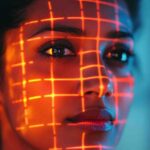Following Part 1 of our deep dive into 3D biometrics with FaceTec VP Jay Meier, the conversation delves even deeper into the innovations driving FaceTec’s technology—and its new UR code protocol.

Jay highlights the transformative power of 3D systems over 2D systems, explaining how FaceTec’s approach captures over 100 video frames during authentication to create unparalleled depth of data. This process, he notes, doesn’t just provide better matching accuracy; it redefines what is possible in terms of liveness detection and fraud prevention.
“By measuring the changes in perspective distortions as the camera moves, we’re effectively creating a new biometric,” Jay explains. “It’s not about simply detecting a face—it’s about understanding the unique curvature and three-dimensionality of that face.”
The discussion also explores how FaceTec’s system mitigates risks like presentation attacks and deepfake injection. By leveraging 70+ involuntary human cues and encrypting biometric data at every stage, FaceTec ensures that its system is resilient against even the most sophisticated attacks.
“Cryptography is essential,” Jay says. “We encrypt data six ways from Sunday and alter files after use so that stolen data is completely unusable.”
Jay also outlines the groundbreaking UR Code protocol, which combines efficiency, privacy, and interoperability to solve some of the industry’s most pressing issues. Unlike other solutions, FaceTec’s UR Code doesn’t require live pings to government databases, instead enabling secure verification through a lightweight, digitally signed 2D barcode.
“It’s a protocol, not a product,” Jay emphasizes. “We think it’s going to revolutionize identity management on the internet. The fire is lit.”
Listen to Part 2 of this fascinating discussion wherever you get your podcasts, or through the media player below:
–
January 14, 2025 – by the ID Tech Editorial Team






Follow Us